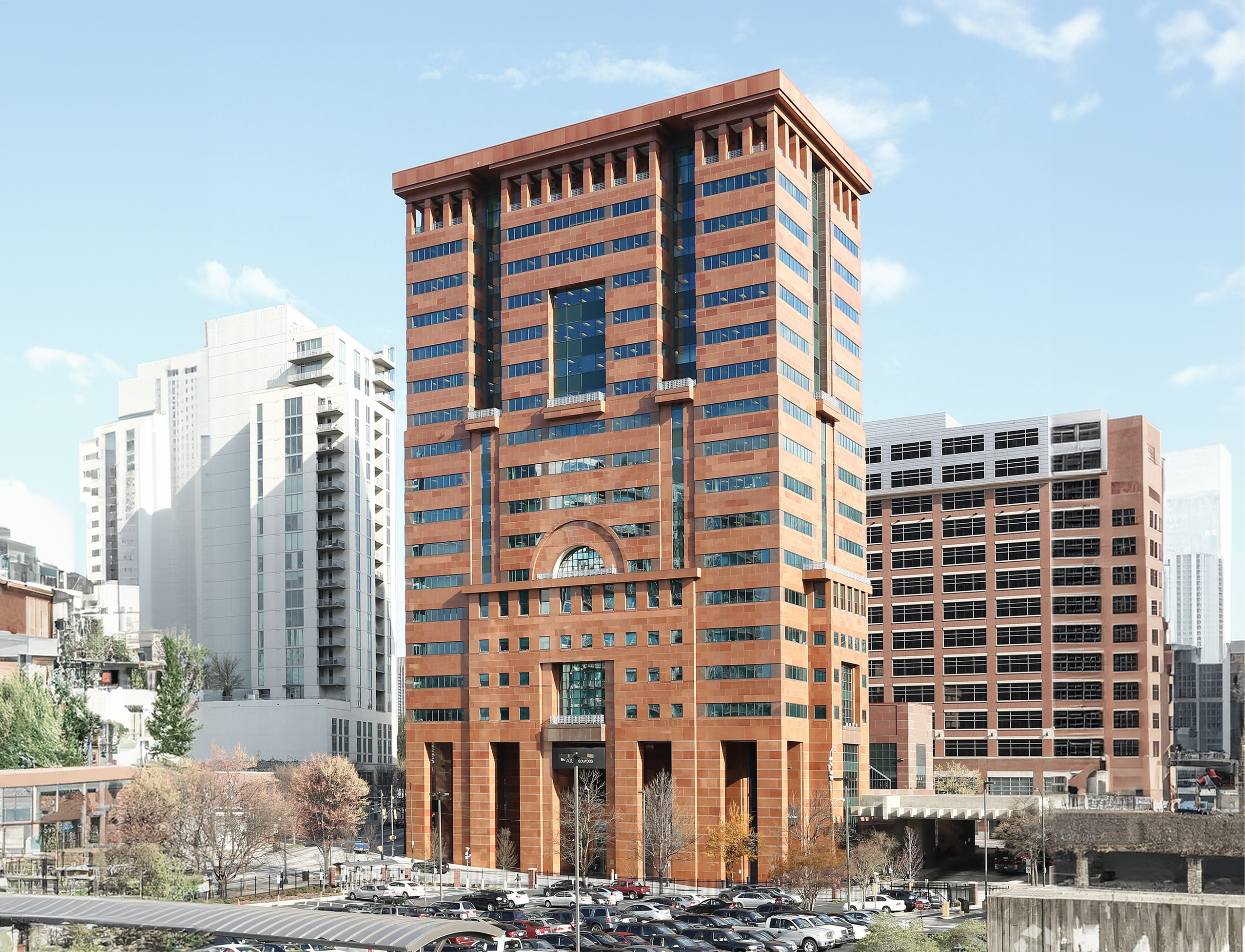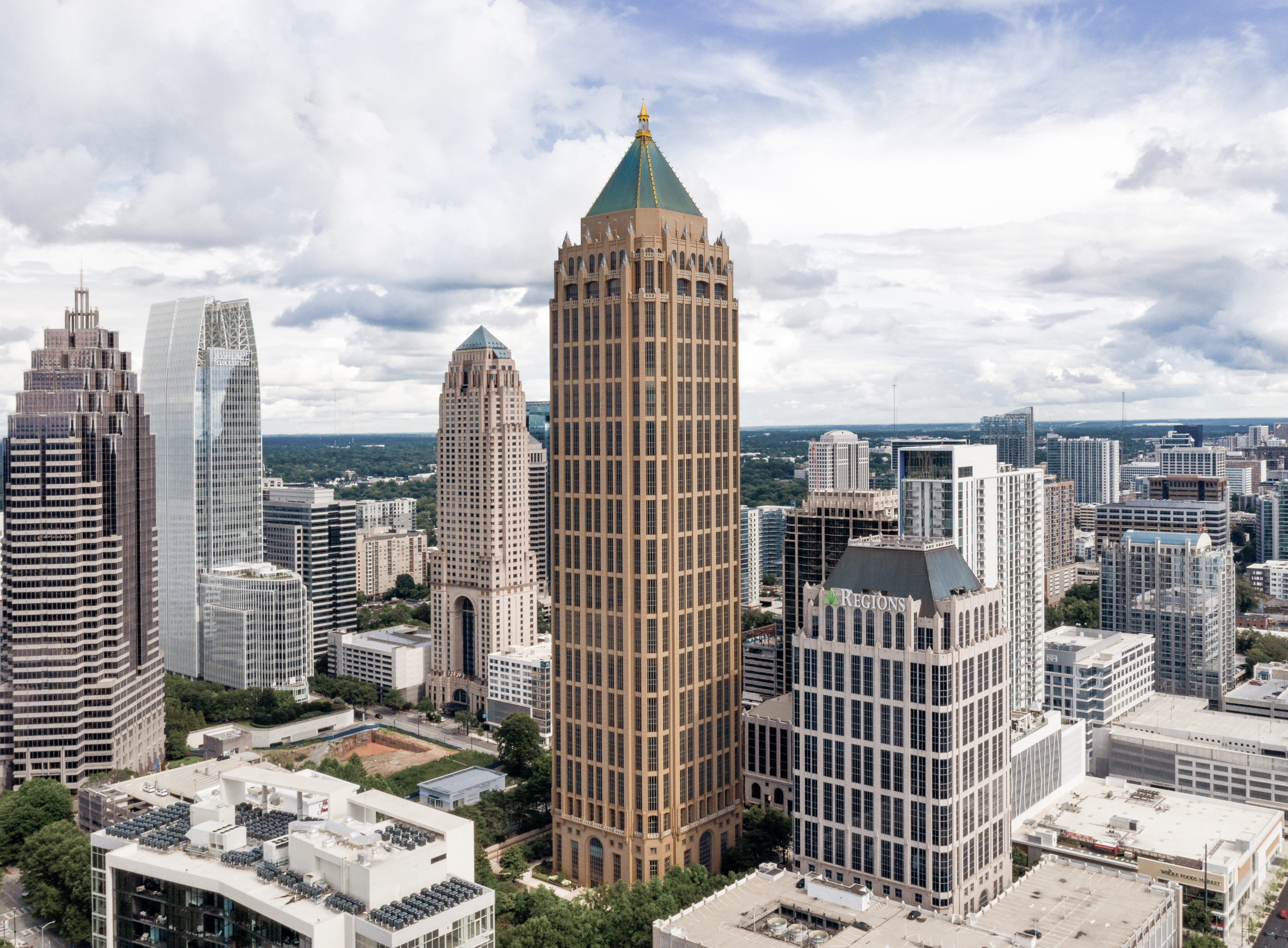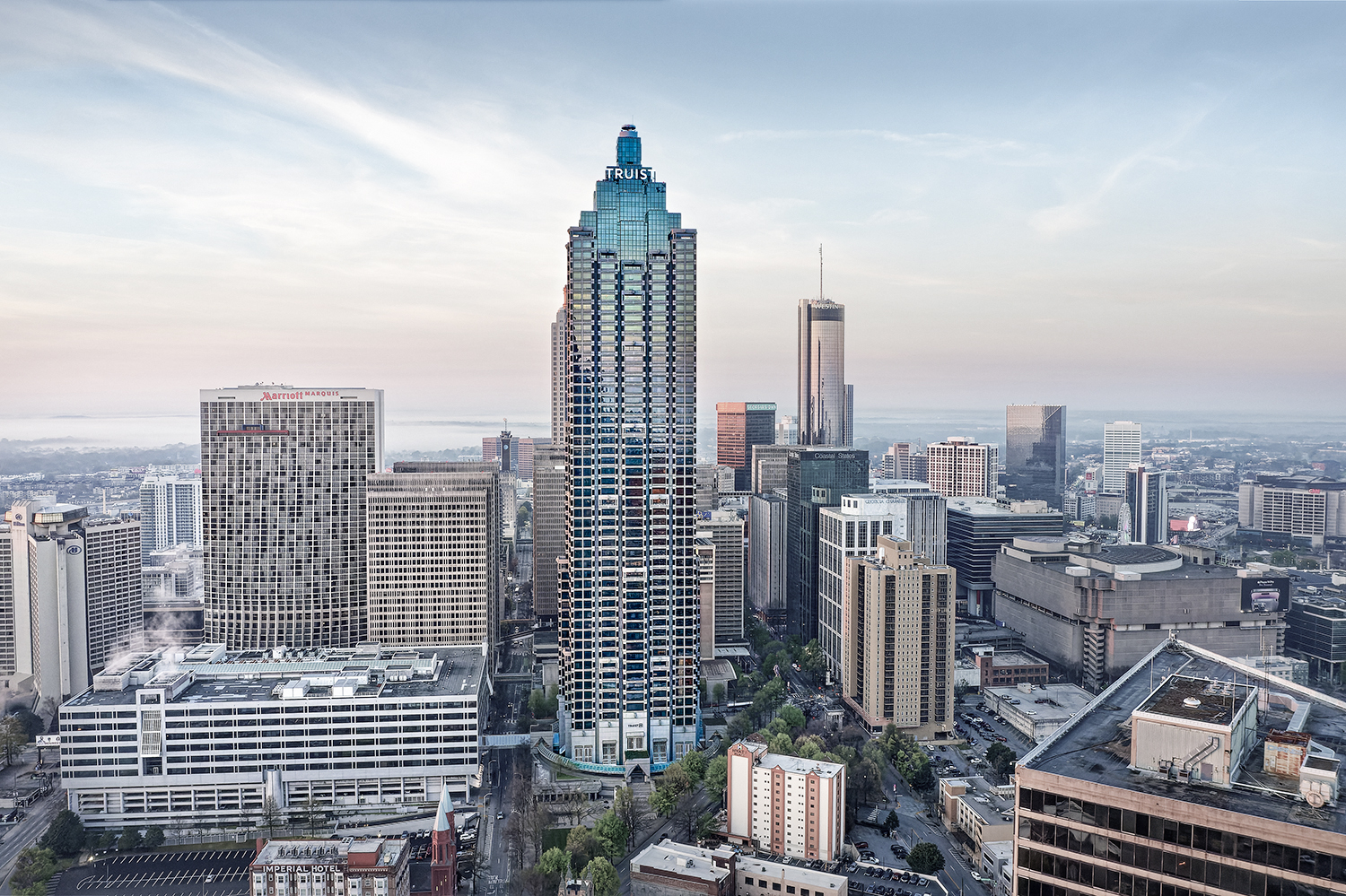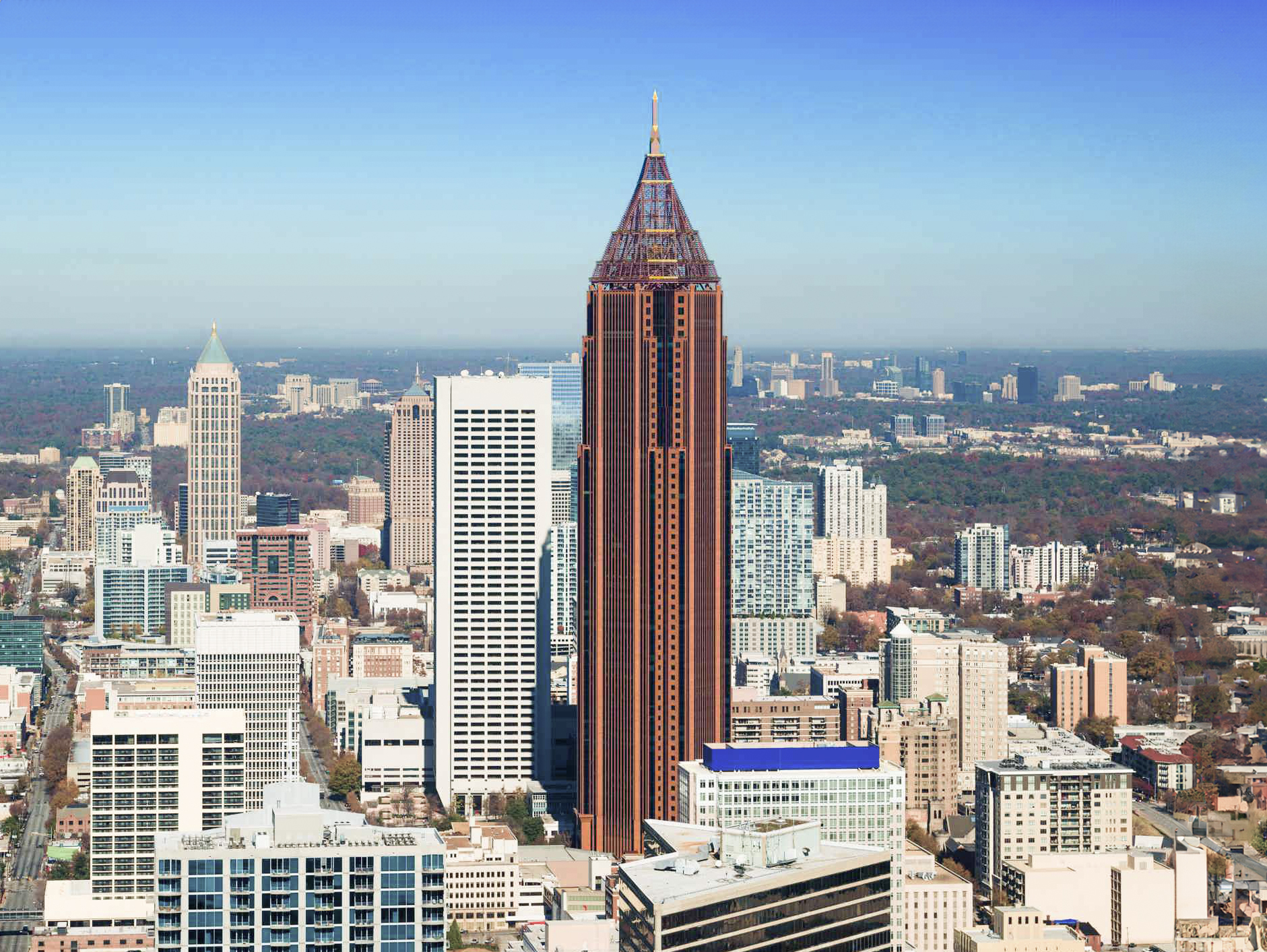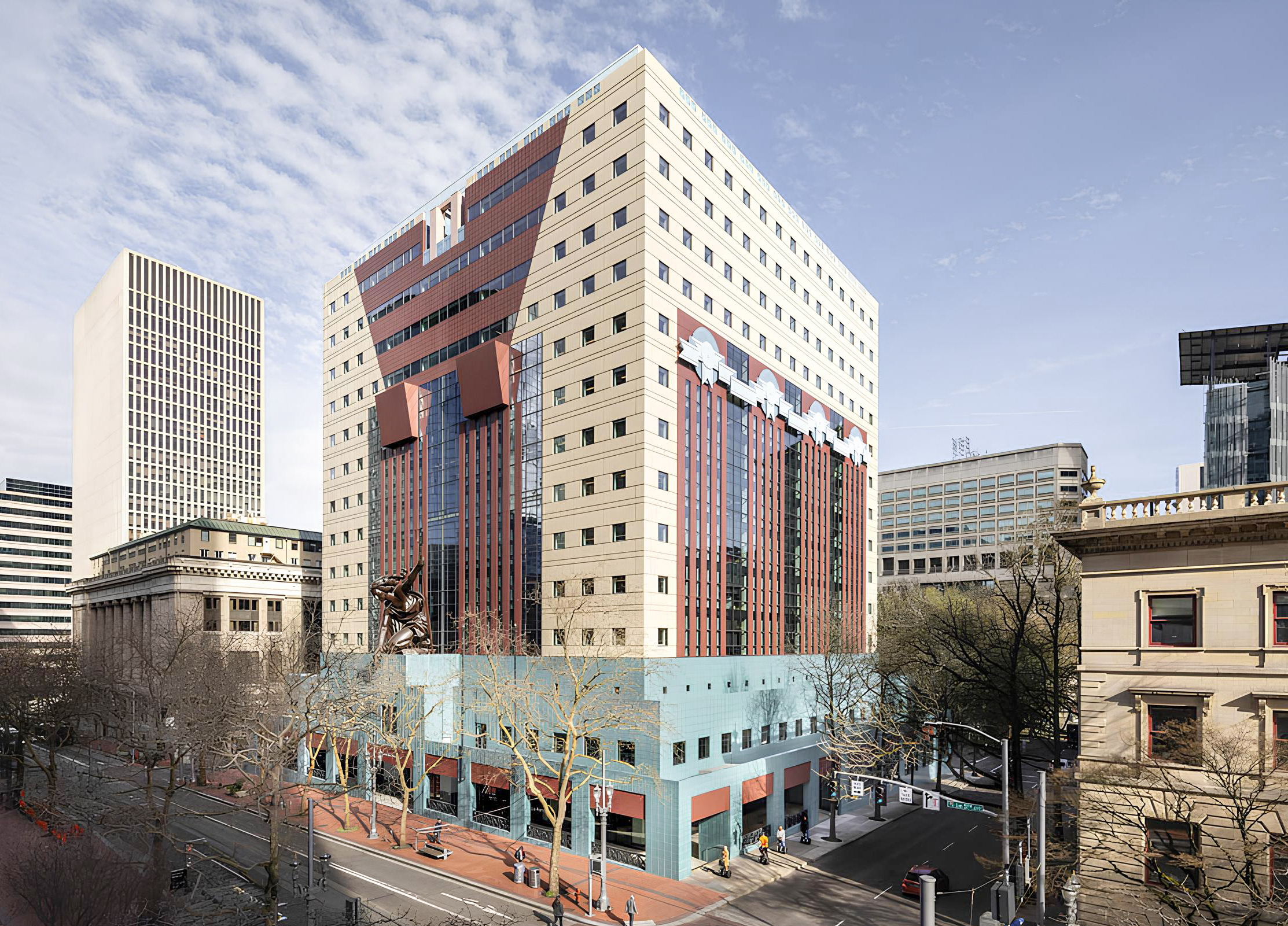The Ten Peachtree Place is a Postmodernist skyscraper designed by Michael Graves, and built between 1988 and 1989 in Atlanta, GA.
Ten Peachtree Place is not the only name you might know this building by though. Between 1989 and 2002 it was also known as Coca-Cola Computer Center.
Its precise street address is 10 Peachtree Street NE, Atlanta, GA. You can also find it on the map here.
The building underwent a major restoration in 2002.
